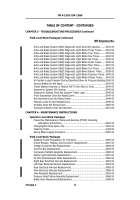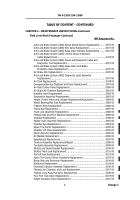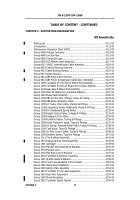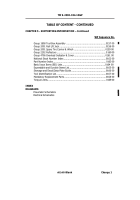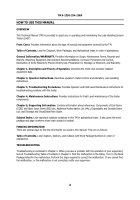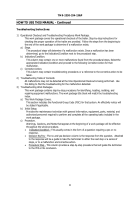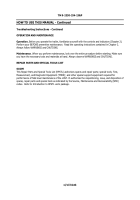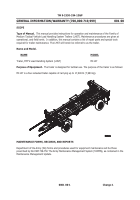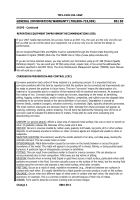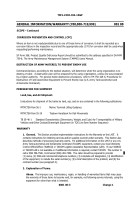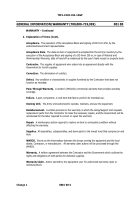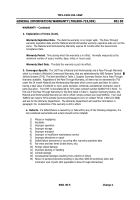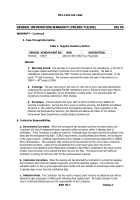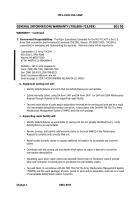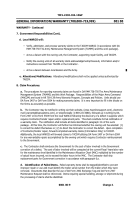TM-9-2330-334-13-P - Page 26 of 1184
TM 9-2330-334-13&P
Change 1
0001 00-2
GENERAL INFORMATION/WARRANTY (700,000-719,999)
001 00
SCOPE - Continued
REPORTING EQUIPMENT IMPROVEMENT RECOMMENDATIONS (EIR)
If your LHST needs improvement, let us know. Send us an EIR. You, the user, are the only one who can
tell us what you do not like about your equipment. Let us know why you do not like the design or
performance.
All non-Aviation/Missile EIRs and PQDRs must be submitted through the Product Data Reporting and
Evaluation Program (PDREP) Web site. The PDREP site is: https://www.pdrep.csd.disa.mil/.
If you do not have Internet access, you may submit your information using an SF 368 (Product Quality
Deficiency Report). You can send your SF 368 using email, regular mail, or fax using the addresses/fax
numbers specified in DA PAM 750-8, The Army Maintenance Management System (TAMMS) Users Manual.
We will send you a reply.
CORROSION PREVENTION AND CONTROL (CPC)
Corrosion prevention and control of Army materiel is a continuing concern. It is important that any
corrosion problems with this item be reported so that the problem can be corrected and improvements can
be made to prevent the problem in future items. The term “corrosion” means the deterioration of a
material or its properties due to a reaction of that material with its chemical environment. An example is
the rusting of iron. Corrosion damage in metals can be seen, depending on the metal, as tarnishing,
pitting, fogging, surface residue, and/or cracking. Plastics, composites, and rubbers can also degrade (also
considered to be corrosion based on the above definition of corrosion). Degradation is caused by
thermal (heat), oxidation (oxygen), solvation (solvents), or photolytic (light, typically ultraviolet) processes.
The most common exposures are excessive heat or light. Damage from these processes will appear as
cracking, softening, swelling, and/or breaking. The US Army has defined the following nine (9) forms of
corrosion used to evaluate the deterioration of metals. These shall be used when evaluating and
documenting corrosion.
UNIFORM (or general attack): Affects a large area of exposed metal surface, like rust on steel or tarnish on
silver. It gradually reduces the thickness of the metal until it fails.
CREVICE: Occurs in crevices created by rubber seals, gaskets, bolt heads, lap joints, dirt or other surface
deposits. It will develop anywhere moisture or other corrosive agents are trapped and unable to drain or
evaporate.
SELECTIVE LEACHING: One element, usually the anodic element of an alloy, corrodes away, leaving the
cathodic element. This can create holes in metal.
INTERGRANULAR: Metal deterioration caused by corrosion on the bonds between or across the grain
boundaries of the metal. The metal will appear to be peeling off in sheets, flaking, or being pushed apart
by layers. A particular type of intergranular corrosion is exfoliation.
PITTING: This can result from conditions similar to those for crevice corrosion. Pits can develop on
various materials due to their composition. Rifle boxes are big victims of pitting.
EROSION: Results when a moving fluid (liquid or gas) flows across a metal surface, particularly when solid
particles are present in the fluid. Corrosion actually occurs on the surface of the metal, but the moving fluid
washes away the corrosion and exposes a new metal surface, which also corrodes.
FRETTING: Occurs as a result of small, repetitive movements (e.g., vibration) between two surfaces in
contact with each other. It’s usually identified by a black powder corrosion product or pits on the surface.
GALVANIC: Occurs when two different types of metal come in contact with each other, like steel bolts on
aluminum, for example. This is a common problem on aircraft because of their mix of metals.
STRESS: Term used to describe corrosion cracking and corrosion fatigue.
Back to Top

